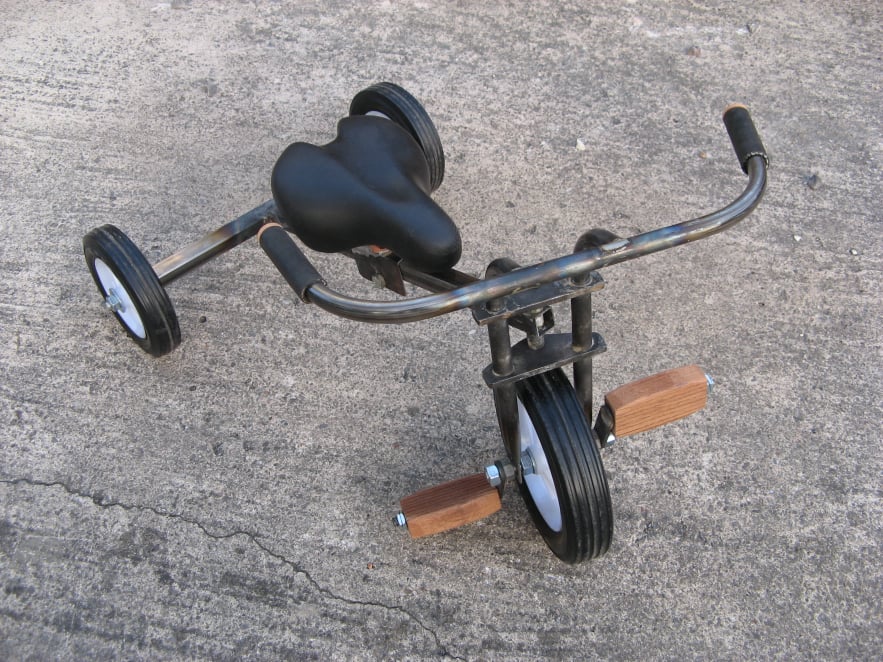
Simple FWD Trike
This traditionally styled children's tricycle was made for a young customer.
It was constructed from steel tube and box section brazed together and fitted with trolley wheels.
The saddle and wheels were purchased items.

This traditionally styled children's tricycle was made for a young customer.
It was constructed from steel tube and box section brazed together and fitted with trolley wheels.
The saddle and wheels were purchased items.
The trike was designed to be as simple as possible to build. All the axles were standard pieces of threaded rod cut to length. Tube bending was kept to a minimum with only the handlebars needing a bend or two, but these could be replaced with commercial items if preferred. No bearings were used, just steel tube on threaded rod, however some of the tubing had to be reamed to get a running fit on the rod.
Click the image to get the drawings.
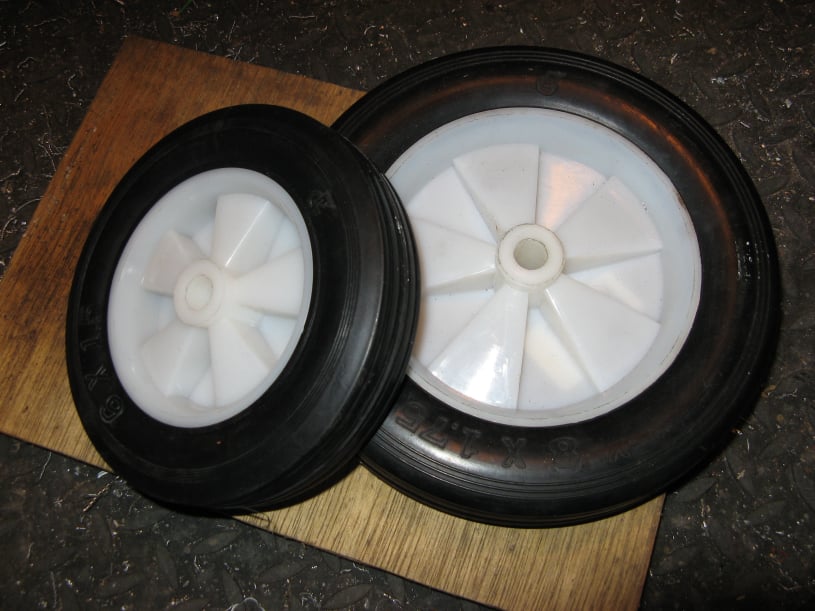
The wheels were purchased from Machine Mart. The front driving wheel was 200mm and the rear wheels 150mm in diameter. They were heavy duty trolley wheels made from white plastic with solid rubber tyres.
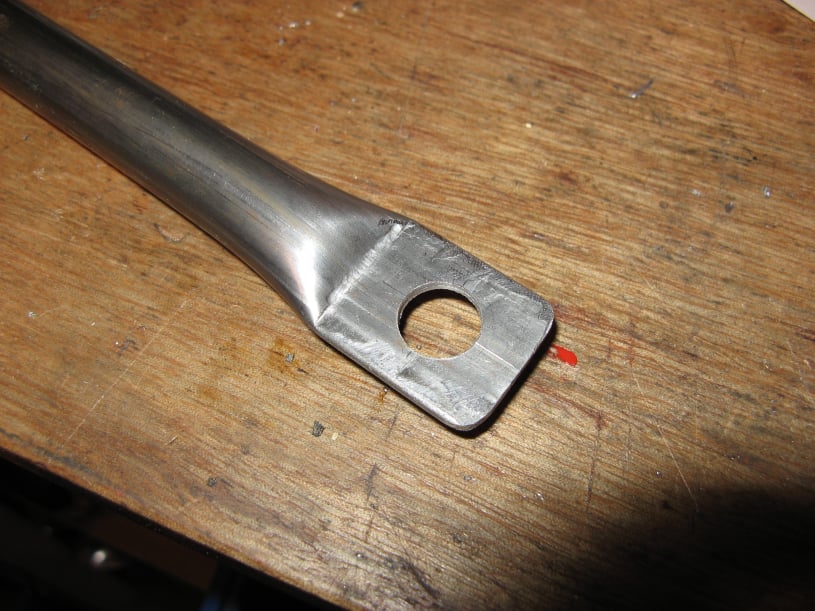
Front Axle and Steering
Construction was started at the front of the bike with forks and steering assembly.
The front forks were made from 16mm diameter cold rolled steel tube. The lower 30mm was crushed in the vice to make a flat area. This was then drilled to 14mm with a step drill to give a mounting point for the front axle
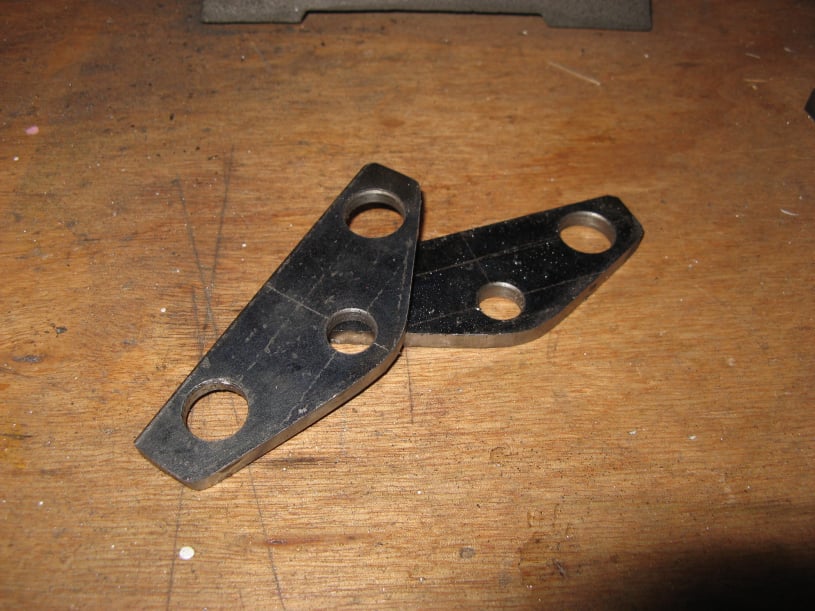
The fork cross pieces were cut from steel plate, marked out and drilled as a matched pair. The 2 larger holes were 16mm and the smaller pivot hole 12mm.
The outside profile was cut and ground to shape.
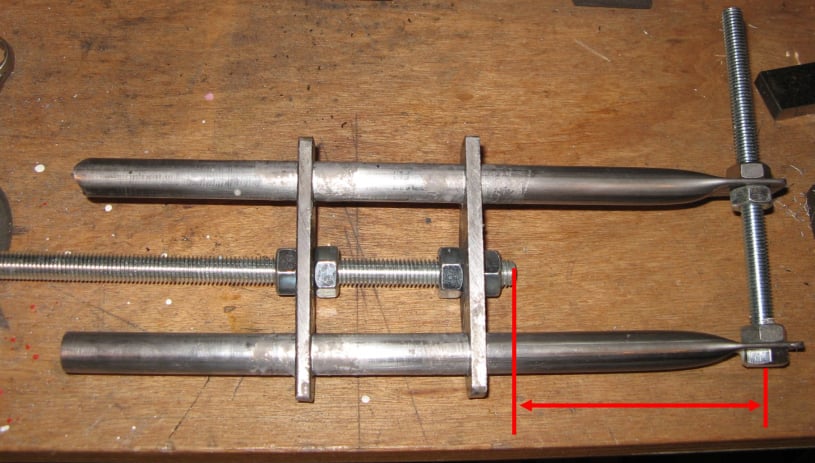
The forks and cross pieces were assembled and held in place with threaded rods. Once everything was square the whole assembly was brazed.
The dimension shown had to be large enough to accommodate the radius of the front wheel.
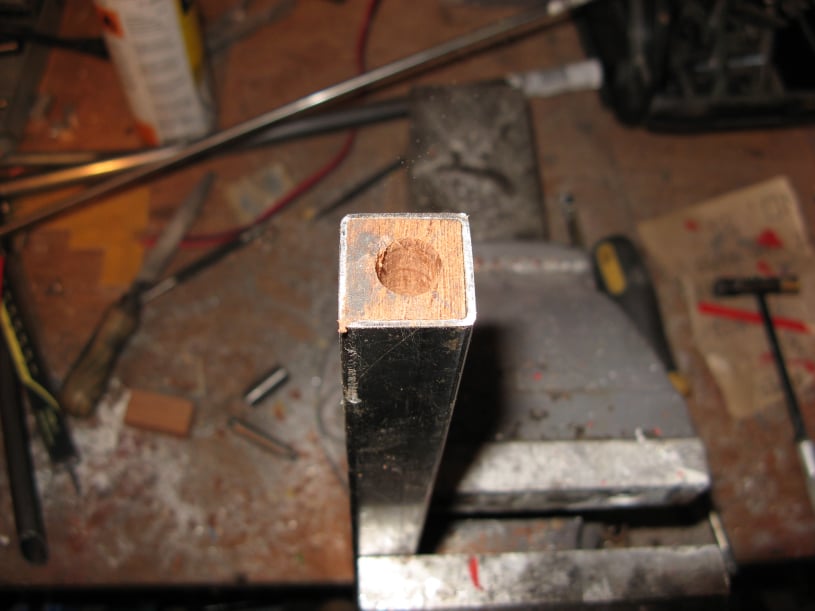
The Rear Axle
The rear axle was made from a 325mm length of 20mm square tube with a 10mm diameter length of thread rod through the middle. The wheels had 12mm holes in them and so a piece of 12mm pipe was used for the wheels to run on.
To hold the threaded rod in the centre of the square tube, some hard wood bushes were made to be a push fit in each end of the tube.
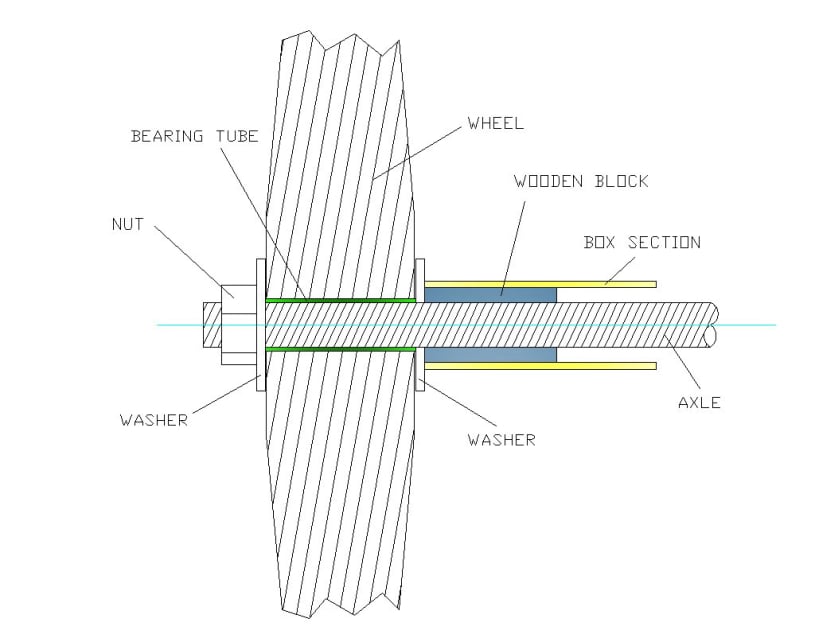
This CAD sketch explains the Rear wheel bearing set- up.
The only important thing was that the 12mm bearing tube was slightly longer than the width of the wheel hub, so that the wheel could still turn with the nuts fully tightened.
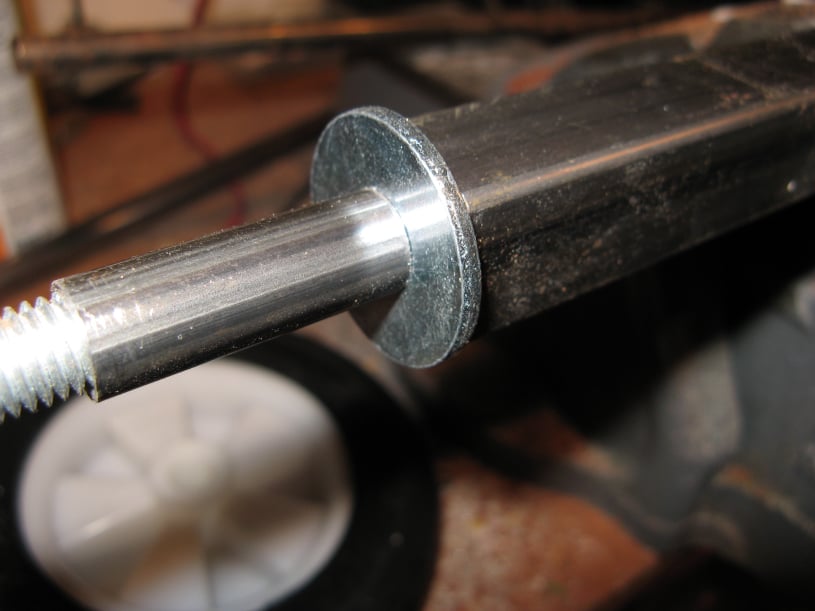
The rear wheels were 33.5mm thick and so a piece of 12mm tube was cut to a length of 34mm to allow the wheel to turn once the nuts were tightened up
The tube was fitted to the threaded rod with a washer both sides and then a nut on the outside. This was done both ends and then the nuts tightened to clamp the whole lot together.
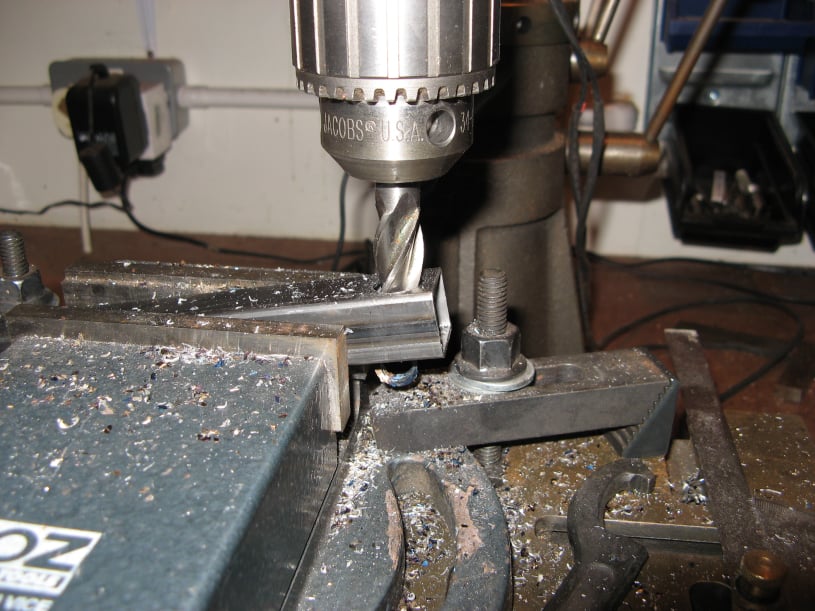
The Frame
The frame was a straight length of 20mm square tube.
A hole was drilled in one end to take the head-stock tube. This was a 14mm diameter piece of tube which would take a 12mm bolt. The angle of this hole set the trail of the trike and can be varied to suit. This particular trike had a 10º angle at the head-stock to give 10mm trail.
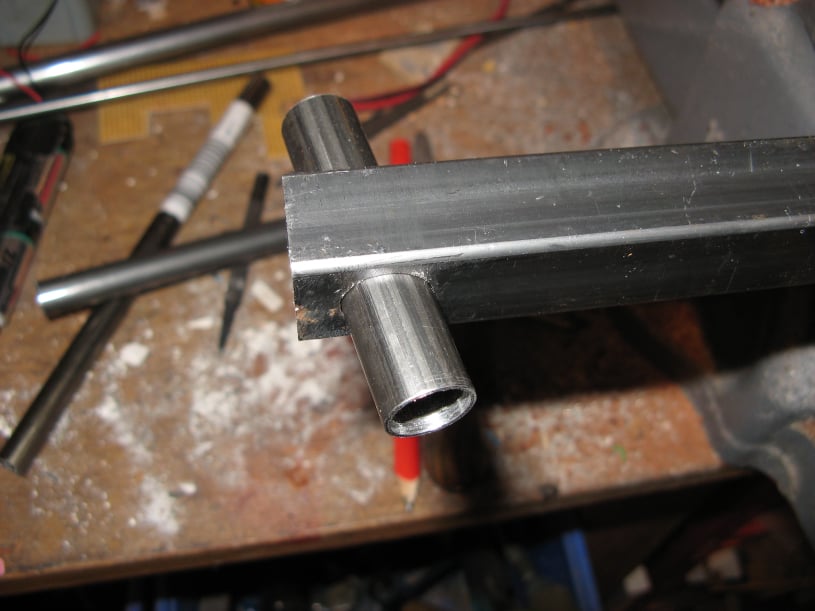
A piece of 14mm steel tube was turned to be a snug fit between the steering webs.
It was then brazed in place in the frame tube.
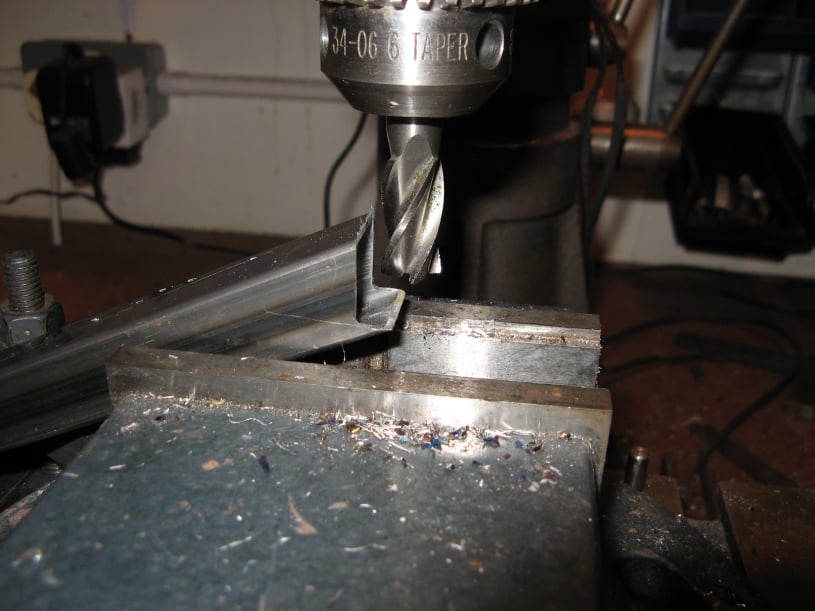
The frame and forks were joined with a pivot bolt and the wheels were temporarily bolted in place so that the angle between the rear axle and frame could be measured.
Once this angle had been measured a notch was cut on the milling machine.
The frame and rear axle were brazed together ensuring that the two were square and that the rear axle was centred about the frame.
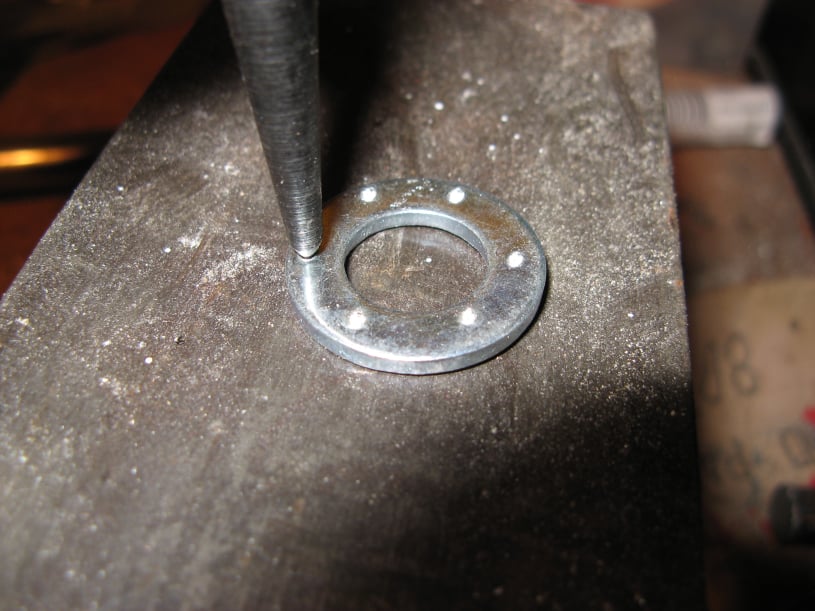
Pedals and Crank
The main axle was a length of 12mm threaded rod cut to length. The drive from the pedals to the wheel was transferred using nuts to grip both the wheel and the pedal cranks.
To help the nuts grip the wheel some lock washers were used. These were made by taking some plain washers and punching marks on both sides as shown
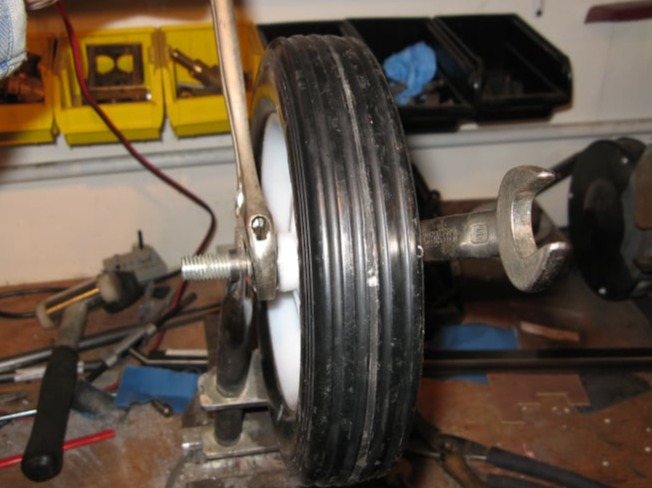
With the forks secured in the vice the rod was passed through and nuts, washers and wheel and tightened very firmly so it wouldn't slip.
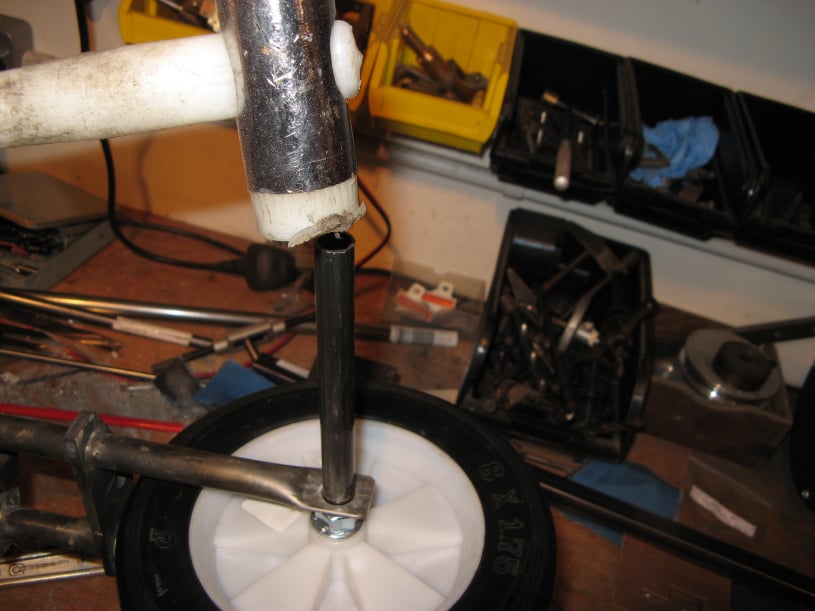
Bearings were cut from 14mm tube which was reamed to have a 12mm hole in the centre. This was then pushed into the whole in each fork and drifted into place until the side movement of the axle was minimised.
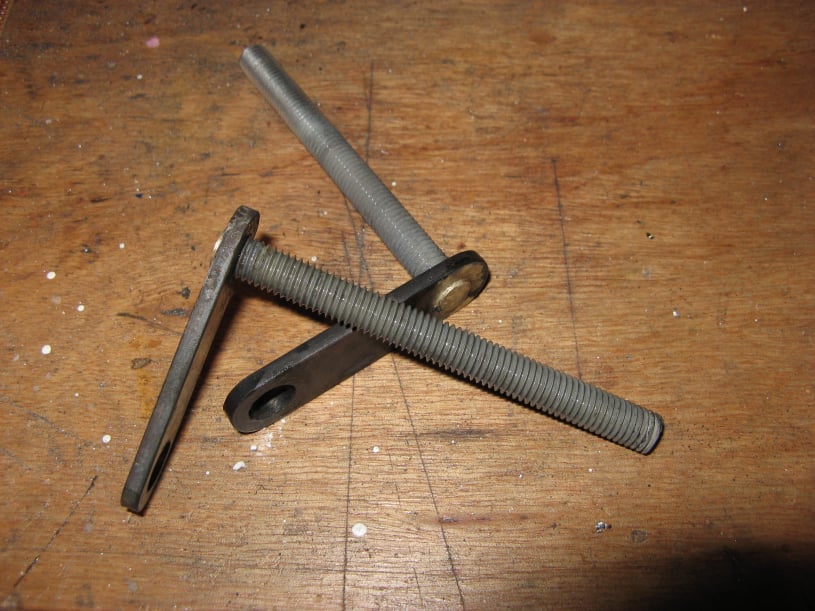
Two pedal cranks were cut from 2mm thick flat plate. The distance between the hole centres was 50mm. One hole was drilled 12mm to fit the axle and the other tapped to take the pedal pivot.
A length of 10mm threaded rod was fitted and brazed into place in each of the tapped holes. The brazing was kept to the rear of the spindle so that it wouldn't affect the free running of the pedals.
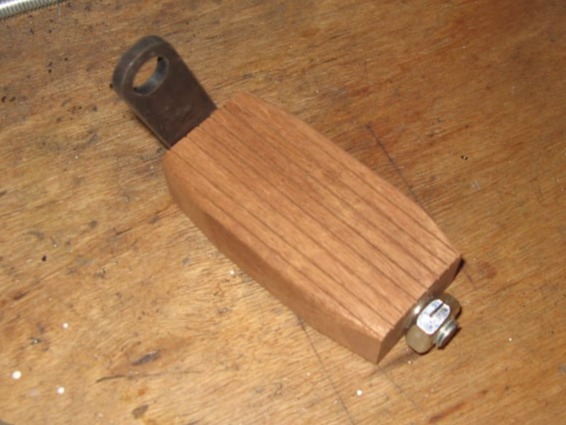
Pedals were cut from hardwood cut and sanded to shape. Some gripping strips were cut on the band saw.
The pedal was then drilled to take a length of 12mm tube. This tube was reamed with a 10mm reamer to fit neatly on the threaded rod. Each pedal was secured with a lock nut which was made by sawing a 10mm nut halfway through and then squashing the cut together so that it gripped the thread.
Finally the pedals were set at 180º and clamped the to front axle using a nut on each side.
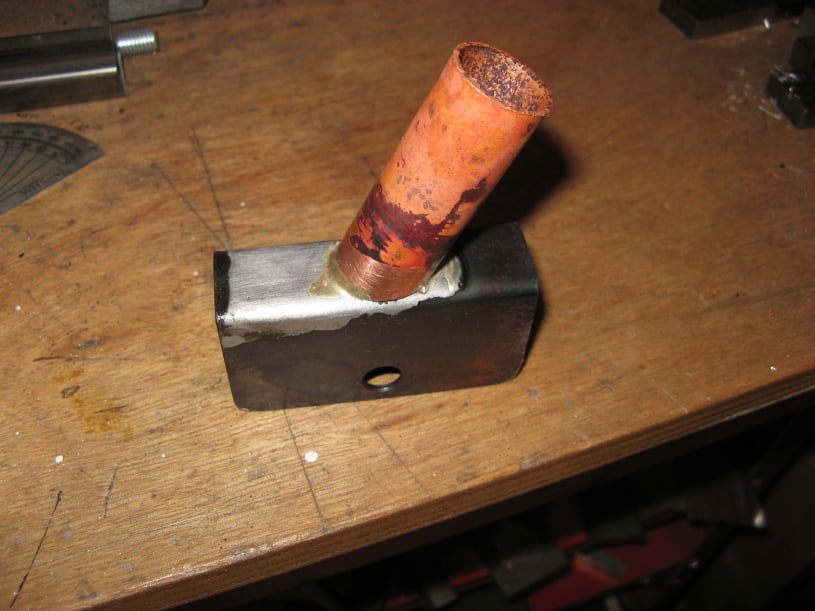
Finishing
The seat was a commercial item. And was secured to the frame with a clamp to allow the position to be adjusted.
The clamp was bent around an off cut of 20mm square tube to be a neat fit and then drilled right through to take a 10mm bolt.
The seat required a 22mm piece of tube to fit it in place, so a 22mm piece of plumbing copper was used. To ensure this was mounted vertically the clamp was placed on the assembled frame and the angle measured. Then the pipe was cut at the same angle and brazed on to the seat post base.
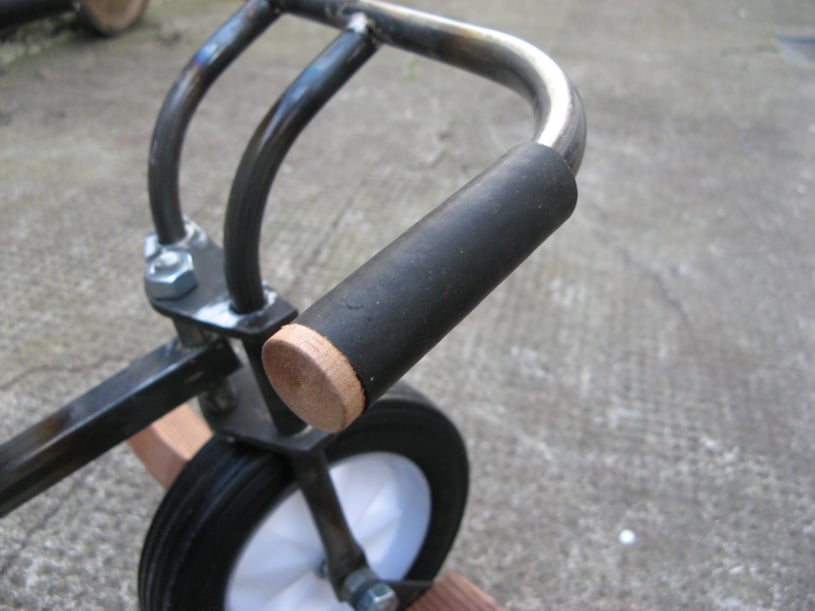
To make the handlebars, two 14mm diameter pieces of pipe were bent forward and a third piece was brazed in place across them.
To finish some grips were made from old car water hose and finished with a wooden bung to match the pedals.
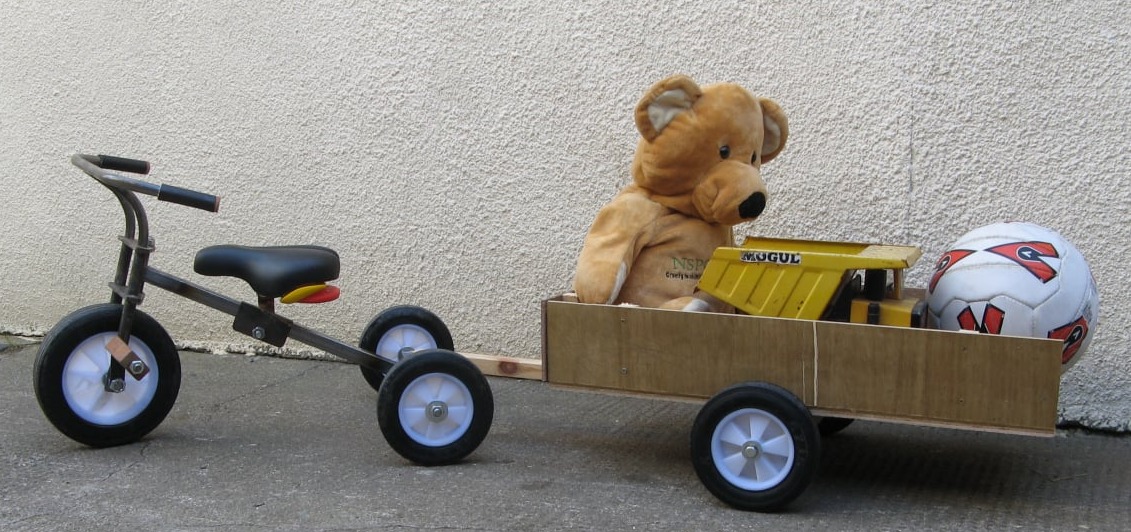
A few weeks later a simple trailer was made from wooden cuts and 2 more 150mm wheels. This proved very popular and added another dimension to the trike.
AI Website Maker